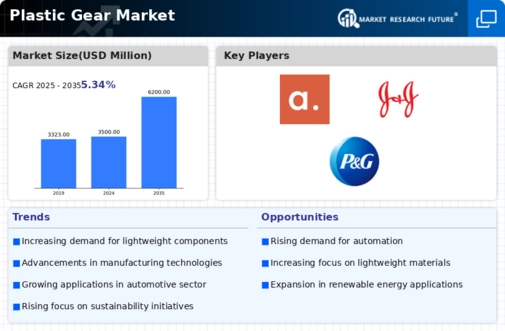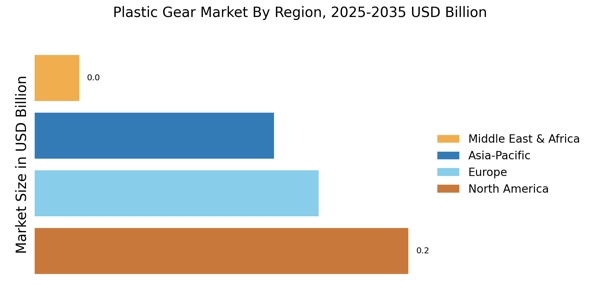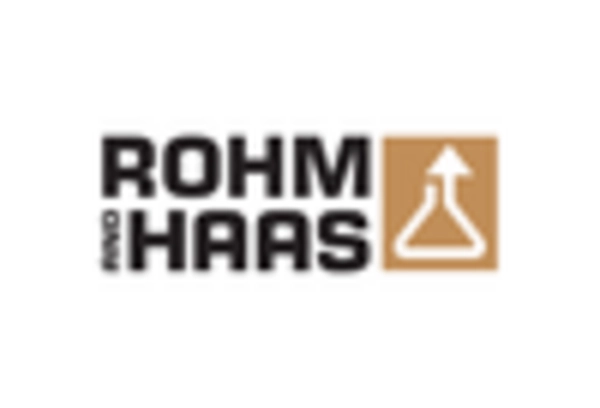Focus on Energy Efficiency
The emphasis on energy efficiency across multiple industries is driving the demand for plastic gears, which are known for their lightweight and low-friction properties. As companies strive to reduce energy consumption and operational costs, the adoption of plastic gears is becoming increasingly attractive. In 2025, it is anticipated that energy-efficient applications will account for approximately 18% of the plastic gear market. This trend reflects a broader commitment to sustainability and operational efficiency, suggesting that the Plastic Gear Market will continue to grow as businesses seek to implement more environmentally friendly solutions.
Growing Applications in Robotics
The increasing integration of plastic gears in robotics applications is emerging as a key driver for the Plastic Gear Market. As industries adopt automation to enhance productivity, the demand for lightweight and efficient components is surging. Plastic gears are particularly favored in robotic systems due to their noise reduction capabilities and resistance to wear. In 2025, the robotics sector is expected to contribute significantly to the overall demand for plastic gears, potentially accounting for 20% of the market share. This trend indicates a robust growth trajectory for the Plastic Gear Market as robotics continue to evolve and expand across various sectors.
Expansion of Consumer Electronics
The consumer electronics sector is witnessing a rapid expansion, which is positively impacting the Plastic Gear Market. With the proliferation of smart devices and appliances, the need for compact and efficient mechanical components is increasing. Plastic gears are being utilized in various applications, including printers, cameras, and home appliances, due to their lightweight nature and cost-effectiveness. In 2025, it is projected that the consumer electronics industry will represent around 30% of the total demand for plastic gears. This growth suggests that the Plastic Gear Market is likely to benefit from the ongoing technological advancements and consumer preferences for innovative electronic products.
Rising Demand in Automotive Sector
The automotive sector is experiencing a notable increase in demand for lightweight and durable components, which positions the Plastic Gear Market favorably. As manufacturers seek to enhance fuel efficiency and reduce emissions, the adoption of plastic gears is becoming more prevalent. In 2025, the automotive industry is projected to account for approximately 25% of the total plastic gear consumption. This shift towards plastic gears is driven by their ability to withstand high stress while being lighter than traditional metal gears. Consequently, the Plastic Gear Market is likely to see substantial growth as automotive manufacturers increasingly prioritize innovative materials that align with sustainability goals.
Advancements in Manufacturing Technologies
Technological advancements in manufacturing processes are significantly influencing the Plastic Gear Market. Innovations such as 3D printing and injection molding are enabling the production of complex gear designs with enhanced precision and efficiency. These technologies not only reduce production costs but also allow for rapid prototyping, which is essential for meeting the evolving demands of various industries. In 2025, it is estimated that the adoption of advanced manufacturing technologies could lead to a 15% increase in production capacity within the Plastic Gear Market. This trend suggests a shift towards more agile manufacturing practices, which may further stimulate market growth.


















Leave a Comment